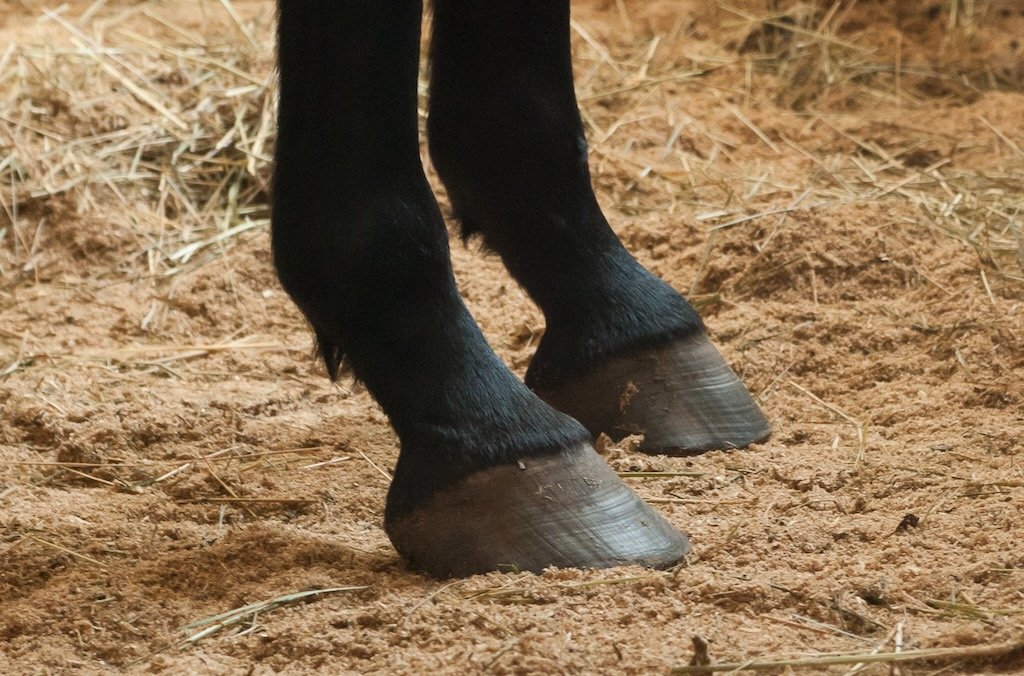Where do tendon injuries come from – Part Two
In the second part of the tendon injuries blog, we explore the role the hooves play on the health of the tendons.
Imbalanced hooves will negatively impact the biomechanics of the entire leg.
Last week we discussed a little but about how tightness and tension in the muscles of the thoracic sling and entire front end can increase the risk of tendon injuries. A well-functioning thoracic sling that does its job absorbing the forces created by locomotion, will prevent the tendon from having to work outside its comfort zone. On the other hand, a weak thoracic sling will cause the tendon to work overtime, increasing the risk of injury.
And while the upper musculature is a big factor when it comes to tendon injuries, it is not the only factor. Another key player lies on the opposite end – the hoof. The hoof is an absolute marvel of natural engineering and it is mind blowing how complex it is. Like the thoracic sling, its job is to provide the body with shock absorption, lightening the load on the joints and tendons. But the hoof can only do its job if it is healthy and well balanced. If we have a hoof that has contracted heels, long toes or any other kind of imbalance, the hoof mechanism will be impaired. This means that every step the horse takes, some of the load that was supposed to be absorbed by the hoof, will be absorbed by other structures. In the long run, this is a recipe for disaster.
Another key thing to realise is how intimately connected the DDFT (deep digital flexor tendon) and the hoof are. The DDFT runs down the pastern and inserts on the bottom part of the pedal bone, running over the navicular bone on its way to the bottom of the foot. This means that even the slightest change in the biomechanics of the hoof, will impact the biomechanics of the DDFT. A horse with a functional hoof will land on the heel part of the hoof first, enabling the hoof mechanism to do its job. However, if the heel is painful (maybe it's underrun, maybe the horse has a central sulcus thrush problem), the horse will avoid landing on it and will land toe first. This will completely change how the DDFT is loaded! In the long run, this can cause a whole host of issues, not just tendon injuries.
Balancing the hooves is always a work in progress.
So, if you are worried about tendon injuries in your horse, go out and take a good look at him. First, observe his thoracic sling. Are the muscles well developed? Does the neck make a nice, long arch from the withers to the poll or is there a dip in front of the withers? Is he able to lift up between his front limbs or is he »stuck« downwards between his legs? Next, take a look at the hooves. If you are unsure about what a well-functioning hoof should look like, consult an expert. Observe how the horse lands when he is moving. Is he landing on his heel or on his toe? If you are unsure of what you are seeing, make a slow-motion video (most smart phones have this option) and see what it tells you. If your horse has a weak thoracic sling coupled with a toe first landing and imbalances in the hooves – it's time to take action. Do something about it before it's too late. Start by getting a good hoof trimmer out to start to work towards balanced hooves. Then, get a bodyworker out to release the thoracic sling and enable it to start becoming stronger. Next, do some targeted groundwork to educate the thoracic sling and build some core muscles. It might take a while to get the hooves balanced and the thoracic sling working, but if you address both issues at the same time, progress will be much faster than if you just address one of them. And trust me, it is well worth the effort.

